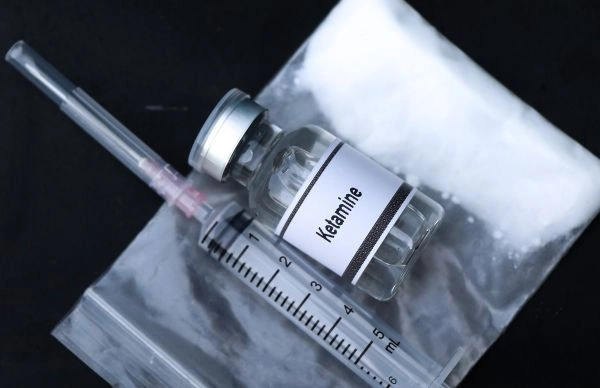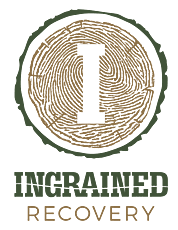Find Comprehensive Ketamine Addiction Treatment at Ingrained
Taking ketamine can be a slippery slope. While it does have some therapeutic benefits for pain and depression, it also comes with the risk of high psychological dependence. If you’ve been abusing the drug for a while, you may require ketamine addiction rehab to get sober.
Ketamine is a Schedule III drug used for anesthetic properties and for treatment-resistant depression. Detox can take just a few days and may not require any tapering. Signs that you may require intensive help for ketamine addiction include withdrawal symptoms when trying to stop, behavior changes, and financial difficulties.
Ingrained Recovery offers comprehensive treatment for ketamine addiction in a secluded, private setting. From medical detox under the care of our professional team to group therapy in inpatient treatment, we offer help every step of the way. Here’s what you should know about ketamine use upfront before you enroll in rehab.
Get Effective Treatment Programs at Ingrained Recovery

What Exactly is Ketamine?
Before you start to think about ketamine addiction treatment options, understanding what the drug does and how it works on the body is important. This can give insight into the reason why ketamine rehab is so important in the early days of recovery.
Ketamine (sometimes also known as Special K) is actually a prescription drug used to treat pain relief and treatment-resistant depression and even functions as an anesthetic in veterinary procedures. It’s considered a dissociative anesthetic. All of this means that it can impact your memory and functioning when taken recreationally.
Under the Controlled Substances Act, it is considered a Schedule III drug. Physical dependence is relatively low, but psychological dependence is quite high. This is why doctors are careful when they prescribe ketamine use.
Get Proven Detox and Rehab Options at Ingrained

Effects of Ketamine on the Body
The reason that so many young adults flock to ketamine is its euphoric effects. It can often make you feel more relaxed and happy, even if you do feel slightly detached from your body. If you struggle with any chronic pain, that’s also relieved for a little while.
However, it also has some of the same effects as alcohol: confusion, lack of coordination, drowsiness, slurred speech, blurred vision, and vomiting.
Of course, some people experience symptoms that can make them uncomfortable. Ketamine can also increase anxiety, have hallucinogenic properties, and increase your heart rate.
Unfortunately, you might also find that your body develops a tolerance for the drug. The more often you take it, the more of the drug you have to take to achieve the same effects. This leads to unintentional overdose as you progress in your addiction.
What to Know About Ketamine Detox When You're Ready
Ingrained Recovery offers a safe place for you to walk through the early days of your recovery from ketamine addiction. Before you enroll in our ketamine rehab, you’ll go through a medical detox, where you have 24/7 access to medical treatment and supervision.
Your addiction treatment may not look the same as someone else’s, but there are a few things that are similar across the board. Here’s what you should know about detoxing from your ketamine addiction.
Ketamine Detox Timeline: What to Expect When Getting Sober
Whether you choose to enroll in a ketamine rehab or not, you might wonder what the process of detox looks like with this drug. Fortunately, there are minimal side effects when you decide to take the first steps to overcome ketamine addiction. Many of the side effects will surface within 24 hours of the last dose.
These mild symptoms can last a few days and gradually subside as time passes. After about thirty days, most of the withdrawal symptoms will have faded.
The only outstanding symptom of a lasting ketamine addiction is typically the cravings. These have the potential to be quite strong and are a leading cause of relapse. This is why you should enroll in ketamine addiction treatment options to learn new coping mechanisms.
Do You Need to Taper Ketamine Use?
Ketamine users will have a few options when they enroll in a detox center like the one at Ingrained. We place all of our clients under medical supervision for as long as they need to face the worst of detox. If you’re under the care of a medical professional, we might be able to make you more comfortable.
Medication-assisted treatment is one option for improved outcomes. Ketamine can be tapered so that you gradually become accustomed to a lower dose in your system.
Because it can be prescribed for other purposes like pain relief and treatment-resistant depression, this is an option, whereas tapering from an illegal drug like cocaine is not. However, it may not be necessary in every case where the effects of ketamine during withdrawal are mild.
We can also prescribe other drugs for your withdrawal symptoms, such as insomnia, nausea, and mood issues.
When Should You Seek Help at a Ketamine Treatment Center?

With all of this in mind, you might be considering enrollment in a ketamine addiction rehab. The drug can have some positive effects, but abuse leads down a dangerous road. How do you decide when you have crossed the line and will need professional treatment for ketamine addiction?
For many people, the line between recreational drug use and addiction is blurred. Taking the drug is fun at first, but it becomes more of a habit over time. Here are a few things to watch out for that indicate it might be time to go to rehab.
Withdrawal Symptoms When Trying to Stop
Think about the last time you tried to quit using ketamine, even just temporarily. Maybe it was a day when you didn’t have money for substances, or you thought you might be able to break the habit on your own. Did you experience withdrawal symptoms?
Once your body becomes accustomed to having ketamine in its system at all times, you might have a few uncomfortable symptoms as it leaves. These symptoms can hit relatively quickly. The half-life of ketamine (the amount of time it takes for the drug to halve itself in the body) is just 2.5 hours.
Some symptoms are relatively benign but may be uncomfortable. For example, you might experience increased anxiety, mood issues, and cravings for another dose. Insomnia, fatigue, and nausea are all also common.
However, there are some more serious effects (though minimal compared to other substances). You may spike a high fever, start to shake or experience heart palpitations.
Changes in Behavior Noted by Others
Have your friends and family told you that you just aren’t the same as you used to be? One of the signs that you may be ready for the treatment process is that you have marked changes in behavior. You may shirk your responsibilities at work, jeopardizing your climb up the corporate ladder. Sometimes, people start to neglect their families and miss important milestones.
If you’re constantly in the doghouse because you missed the mark on your responsibilities, it might be a sign that you need help.
The good news is that Ingrained Recovery can help you repair those fractured relationships in family therapy. It won’t compensate for missed moments and opportunities but helps set you on solid ground.
Financial Strain Due to Drug Use
Treatment for ketamine addiction might be more practical for you. One of the problems with repeated ketamine use is that it’s quite expensive. If you find that your drug addiction is putting unnecessary financial strain on your family, then it may be time to put a stop to it so that you can start to save and rebuild.
Oftentimes, the excuse for not seeking treatment is that a person can’t afford it. Their continued drug abuse has tapped out their financial resources.
Ingrained Recovery accepts many major health insurance carriers to offset the cost of rehab. You may be surprised to learn that your health insurance provider might fully cover your treatment. We will verify your benefits in a quick enrollment call.
Why Choose Ingrained Recovery's Ketamine Rehab Program?

Once you make your way through the detox process, you’re ready for further ketamine treatment that focuses on long-term sobriety. Experiencing any of the above signs that your drug use has gone too far is reason enough to consider pursuing inpatient treatment with our experienced team.
Here are a few services that we offer in our residential treatment process to help you lay the foundation for long-term success upon graduation.
Exposure to a Variety of Therapy Treatments with Individual Counselors
Unfortunately, there aren’t many one-size-fits-all approaches to ketamine abuse. One of the best things you can do to help cravings subside is to manage negative thought patterns. To help with this, we offer cognitive behavioural therapy (CBT).
This form of therapy helps you to interrupt your thoughts and your feelings so that you can choose a different outcome.
However, we also use other proven methods according to substance abuse research. We may also use a combination of dialectical behavioral therapy, motivational interviewing, and novel therapies that give an opportunity to develop positive coping mechanisms.
Group Therapy and Peer Support Groups
Sometimes, the best way to learn those new coping skills is alongside a community of your peers. While you can attend Twelve Step groups as part of outpatient programs, our residential option allows you the best of both worlds. You can learn from and connect with like-minded people committed to sobriety and process what you learn in individual therapy.
Group therapy is a proven model for people to get help for substance use disorders.
Help for Mental Health Disorders Simultaneously
People often turn to chronic ketamine use and other psychoactive drugs because they have underlying mental health disorders that require treatment. Attending ketamine rehab gives you an opportunity to explore deeper issues such as depression and anxiety.
Unlike outpatient treatment programs, Ingrained takes a comprehensive assessment to determine if you could benefit from medication or a specialized treatment program that targets these issues. We monitor your progress and can adjust your medication accordingly based on your responses.
With one in four people having both mental health issues and substance use disorders, this is key in a robust treatment program.
Equine-Assisted Therapy and Complementary Therapies

One of the things that sets our ketamine addiction treatment center apart from others is our campus. At Ingrained, you have access to fifty acres of rolling hills and nature trails. This space also allows a unique opportunity to maintain a herd of horses so that we can offer equine-assisted therapy.
Equine-assisted therapy is associated with higher retention rates in substance abuse treatment and can make successful completion of a program more likely, according to the research.
We also offer other complementary therapies in our ketamine rehab. You might have opportunities to try out yoga, art, and music therapy.
Increased Privacy in Our Secluded Setting
If you don’t want anyone in the community to know that you’re enrolled in a ketamine rehab, you want to ensure that you don’t cross paths with them. Our facility is state-of-the-art, but we’re located out in rural Georgia so that you can preserve your privacy and have the space you need to manage your first days sober.
You’ll have access to our luxurious amenities and quiet settings where you can reflect on how you can improve and make the most of your ketamine rehab experience.
Up To 100% of Rehab Costs Covered By Insurance
Contact Ingrained Today for Ketamine Addiction Treatment
If your ketamine addiction has taken over your life, then it might be time for you to enroll in a rehab program that offers the help and space you need to process. Ingrained Recovery offers same-day placements so that you get the help you need whenever you’re ready for it.
All it takes is a single call to our enrollment team, who can answer all of your questions and verify your insurance benefits quickly, confidentially, and with no obligation to our program.
Don’t delay another day with your ketamine addiction. Let Ingrained walk alongside you in your early recovery efforts.
References
- Department of Justice. (n.d.). Drug fact sheet: Ketamine. Drug Enforcement Administration.
- Pal, H. R., Berry, N., Kumar, R., & Ray, R. (2002). Ketamine dependence. Anaesthesia and intensive care, 30(3), 382–384.
- Substance Abuse Treatment: Group Therapy [Internet]. Rockville (MD): Substance Abuse and Mental Health Services Administration (US); 2005. (Treatment Improvement Protocol (TIP) Series, No. 41.) 2 Types of Groups Commonly Used in Substance Abuse Treatment. Available from:
- Dimeff, L. A., & Linehan, M. M. (2008). Dialectical behavior therapy for substance abusers. Addiction science & clinical practice, 4(2), 39–47.
- Smedslund, G., Berg, R. C., Hammerstrøm, K. T., Steiro, A., Leiknes, K. A., Dahl, H. M., & Karlsen, K. (2011). Motivational interviewing for substance abuse. The Cochrane database of systematic reviews, 2011(5), CD008063.
- Substance Abuse Treatment: Group Therapy [Internet]. Rockville (MD): Substance Abuse and Mental Health Services Administration (US); 2005. (Treatment Improvement Protocol (TIP) Series, No. 41.) 2 Types of Groups Commonly Used in Substance Abuse Treatment. Available from:
- Mental health and substance use co-occurring disorders. SAMHSA. (n.d.).
- Gatti, F., Walderhaug, E., Kern-Godal, A., Lysell, J., & Arnevik, E. A. (2020). Complementary horse-assisted therapy for substance use disorders: a randomized controlled trial. Addiction science & clinical practice, 15(1), 7.
